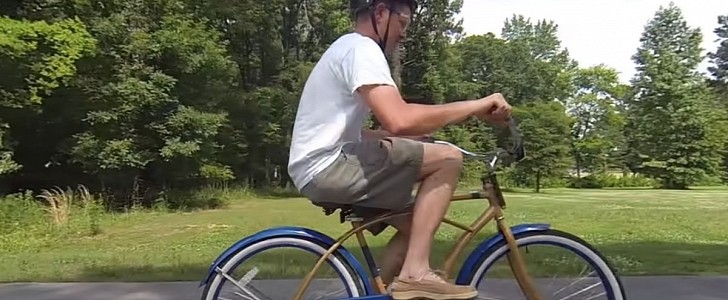“Just like riding a bike” is a phrase we often hear in relation to a lot of things, and that refers to something that feels like second nature: once you learn it, you can never forget it and tends to come back instantly.
Riding a bike surely feels like second nature to cyclists and, because of it, the whole process comes naturally, seemingly without thought and much effort on behalf of the brain. June 2020 being autoevolution’s Two-Wheeler Month, we dug up an older video that shows that, when it comes to learning to ride two-wheelers, things are a bit more complicated than we might be tempted to think.
The video at the bottom of the page is the world-famous Backwards Brain Bicycle experiment by engineer and YouTube personality Destin Sandlin, founder of Smarter Every Day. It started off as a hilarious prank at the “office,” when welders toyed with his bike so that steering was reversed: turn the handlebar to the left and the bike would go right, and viceversa.
Much like you must be thinking right now, Sandlin thought this was a fun challenge – and a very easy one, at it. After all, if he was able to learn to ride a bike, how difficult would it be for him to adapt to a new way of riding?
It turned out that it was almost impossible to do it, because of the way the human brain is wired. It took Sandlin eight full months of daily practice in his driveway to be able to go for short stretches without falling off – so, unless you’re willing to invest that kind of time and energy, this backwards bike can’t be ridden.
Perhaps the more surprising find of the experiment was that his young son only needed two weeks to grasp the new way of riding because his brain has more neuroplasticity than the adult one. It learns and adapts quicker, to be more specific.
At the end of the experiment, Sandlin had another unexpected surprise when he found he could no longer ride a normal bike. His conclusion was that our view of the world is biased, even when it comes to something as apparently simple as learning to ride a bike because of how we’re wired. Once you learn something, it’s very difficult to unlearn it or change it up.
“We need to be aware of and question how we are interpreting the world around us,” Sandlin said of his experiment.
The video at the bottom of the page is the world-famous Backwards Brain Bicycle experiment by engineer and YouTube personality Destin Sandlin, founder of Smarter Every Day. It started off as a hilarious prank at the “office,” when welders toyed with his bike so that steering was reversed: turn the handlebar to the left and the bike would go right, and viceversa.
Much like you must be thinking right now, Sandlin thought this was a fun challenge – and a very easy one, at it. After all, if he was able to learn to ride a bike, how difficult would it be for him to adapt to a new way of riding?
It turned out that it was almost impossible to do it, because of the way the human brain is wired. It took Sandlin eight full months of daily practice in his driveway to be able to go for short stretches without falling off – so, unless you’re willing to invest that kind of time and energy, this backwards bike can’t be ridden.
Perhaps the more surprising find of the experiment was that his young son only needed two weeks to grasp the new way of riding because his brain has more neuroplasticity than the adult one. It learns and adapts quicker, to be more specific.
At the end of the experiment, Sandlin had another unexpected surprise when he found he could no longer ride a normal bike. His conclusion was that our view of the world is biased, even when it comes to something as apparently simple as learning to ride a bike because of how we’re wired. Once you learn something, it’s very difficult to unlearn it or change it up.
“We need to be aware of and question how we are interpreting the world around us,” Sandlin said of his experiment.






